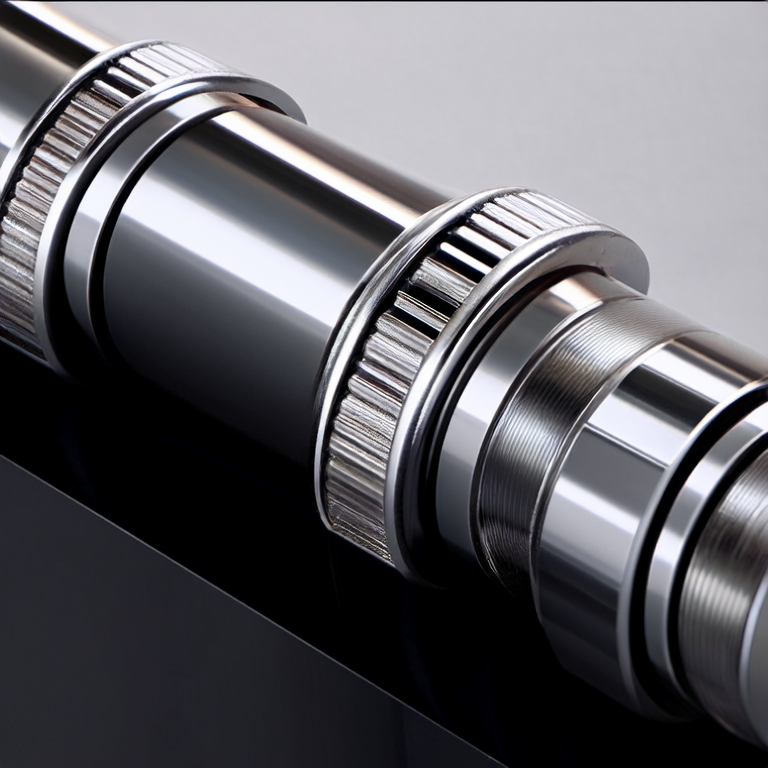Cylindrical vs Tapered Roller Bearings: Key Differences Explained
31 Jul.,2025
Choosing the right bearing is vital for machinery performance
Introduction
Choosing the right bearing is vital for machinery performance. It’s crucial to understand the differences between cylindrical and tapered roller bearings. Both types have unique features that serve different needs. Custom cylindrical bearings can enhance performance in various applications. Knowing what each type offers helps in making the right choice. This article breaks down the key differences, so you can easily decide which is best for your project. 
Summary Answer
**Cylindrical roller bearings are designed to handle radial loads with minimal friction. Tapered roller bearings can manage both radial and axial loads, making them suitable for applications requiring higher load capacities.** Understanding these differences is important for selecting the right bearing for your needs.
1. Design Differences
Cylindrical and tapered roller bearings differ mainly in their design.
- **Cylindrical Roller Bearings**
- Have rollers that are aligned parallel to the bearing axis.
- Ideal for supporting heavy radial loads.
- **Tapered Roller Bearings**
- Feature tapered rollers that make them suitable for handling both radial and axial loads.
- Often used in applications like automotive and industrial machinery.
Design Illustration
- Cylindrical bearings typically have a uniform cage structure.
- Tapered bearings are cone-shaped to strengthen the load support.
| Feature | Cylindrical Roller Bearing | Tapered Roller Bearing |
|----------------------------|---------------------------|-----------------------|
| Load Type | Radial | Radial & Axial |
| Roller Shape | Cylindrical | Tapered |
| Typical Applications | Motors, rolling mills | Cars, construction |
2. Load Handling Capacity
Load capacity determines how much weight a bearing can support.
1. **Cylindrical Roller Bearings**
- Best for high radial loads.
- Limited capacity for thrust loads.
2. **Tapered Roller Bearings**
- Designed for combined loads.
- Higher axial load capacity compared to cylindrical bearings.
Load Capacity Data
- Typical cylindrical roller bearing can handle axial loads of 20% of the radial load.
- Tapered roller bearing can manage axial loads up to 50% of the radial load.
3. Application Suitability
Understanding where to use each bore type is crucial for optimal performance.
- **Cylindrical Roller Bearings**
- Commonly found in applications like pumps and electric motors.
- Useful where radial loads dominate.
- **Tapered Roller Bearings**
- Widely used in automotive wheel hubs and in heavy machinery.
- Excellent for applications needing axial support.
Application Comparison
- A cylindrical roller bearing in a heavy-duty motor might perform efficiently in sustained radial loads.
- Conversely, a tapered roller bearing enhances stability in a car’s wheel assembly due to its axial advantages.
Conclusion
In summary, both cylindrical and tapered roller bearings have unique features that cater to specific needs. **Selecting the right bearing depends on the load type and application suitability.** Cylindrical roller bearings are ideal for radial loads, while tapered roller bearings provide versatility for combined loads. Knowing these key differences helps in making a well-informed choice.
FAQ
**Q1: Can I use tapered roller bearings instead of cylindrical ones?**
A1: It depends on the application. Tapered roller bearings can manage more complex loads, while cylindrical bearings are better for simple radial applications.
**Q2: How do I maintain these bearings?**
A2: Regular lubrication and inspection for wear can extend the life of both bearing types.
**Q3: Are there custom cylindrical bearings available?**
A3: Yes, many manufacturers offer custom cylindrical bearings to meet specific requirements.
Table of Contents
Click to expand
1. [Design Differences](#design-differences)
2. [Load Handling Capacity](#load-handling-capacity)
3. [Application Suitability](#application-suitability)
4. [Conclusion](#conclusion)
5. [FAQ](#faq)